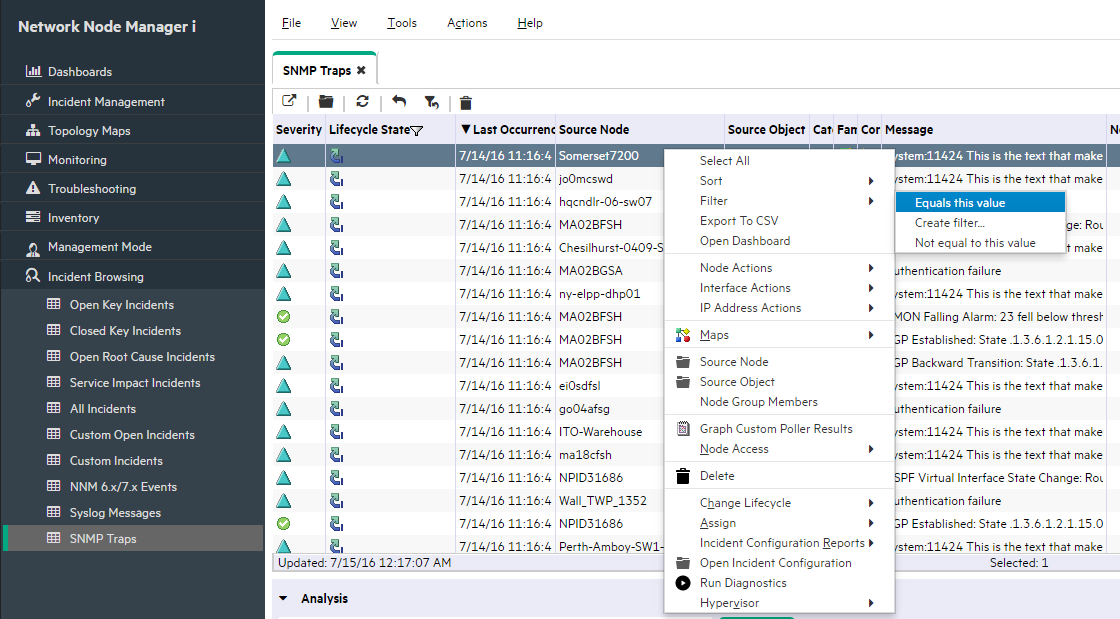

- #SNMP TRAP RECEIVER LOGS INSTALL#
- #SNMP TRAP RECEIVER LOGS SOFTWARE#
- #SNMP TRAP RECEIVER LOGS WINDOWS#
You will need to be able to deploy a test environment using virtual machines (VM's). This document is intended for use by Nagios XI Administrators who wish to learn how SNMP Traps work. Just to be really clear, the SNMP Sender server is NOT required in your real world production environment, it is purely used as a training tool in this tutorial.

In your real world production environment this could be a UPS, Storage Array or any other SNMP Trap sending device. NOTE: The SNMP Sender server is purely used to provide the functionality of sending Traps to Nagios XI SNMP Receiving server, specifically for this tutorial.

Here you will receive status updates of the CentOS server being monitored on the sender server.Īfter following this document and deploying the test environment you will have a solid understanding of how SNMP Traps work and will be able to easily configure SNMP Traps received from real devices. This server will RECEIVE SNMP Traps from the sending server.This is achieved using the “SNMP Trap Sender” component built into Nagios XI.It is monitoring a single CentOS server which you will also be instructed to setup. This server will SEND SNMP Traps to the receiving server.To make this as simple as possible we will use two Nagios XI servers and a CentOS server: The goal of this tutorial is to provide step by step instructions to allow you to setup an test environment and see first hand how traps work.

Traps can be overwhelming to start with and the difficulty starts when you're trying to learn following other guides that aren't specifically about the device you're receiving traps from. This document is purely focused on SNMP Traps.
#SNMP TRAP RECEIVER LOGS INSTALL#
Yum install net-snmp (Red-Hat, Fedora distributions)Ģ.Open the /etc/default/snmpd file and make the following attribute edits: On other Linux systems, install the snmpd package by running one of the following commands:Īpt-get install snmpd snmp (Debian, Ubuntu distributions) LINUX and ERA Virtual Applianceġ.ERA VA already contains needed package. Now you can receive SNMP messages from your ERA Server. Your server address is displayed in the Nodes section.ħ.Click Trap Receiver Stopped and select Start. Select the IP address of the server and click OK. The IP address of the ERA Server should be displayed in this list.Ħ. Wait for the search to finish, the search results will be displayed in the Discovery results window. Check the network address of your subnet (displayed in this window). AdRem SNMP Manager : Start the application and select Create New SNMP Node List. Install AdRem SNMP Manager or AdRem NetCrunch. The SNMP Service is installed and doesn`t need to be configured.Ģ.
#SNMP TRAP RECEIVER LOGS SOFTWARE#
SNMP Trap Software configuration (Client)ġ. Rights will be set to READ ONLY, this is ok.ĥ.Make sure that Accept SNMP packets from any hosts is selected and click OK to confirm. Type public into the Community name field and click Add. Click Add to display the SNMP Service Configuration window. Click Add, type the Host name, IP or IPX address of the computer where the SNMP trapping software is installed into the appropriate field and click Add. Search for the SNMP Service.Ģ.Open the Traps tab, type public into the Community name field and click Add to list.ģ.
#SNMP TRAP RECEIVER LOGS WINDOWS#
SNMP Service configuration (ERA Server)ġ.Press the Windows key + R to open a run dialog box, type Services.msc into the Open field and press Enter.


 0 kommentar(er)
0 kommentar(er)
